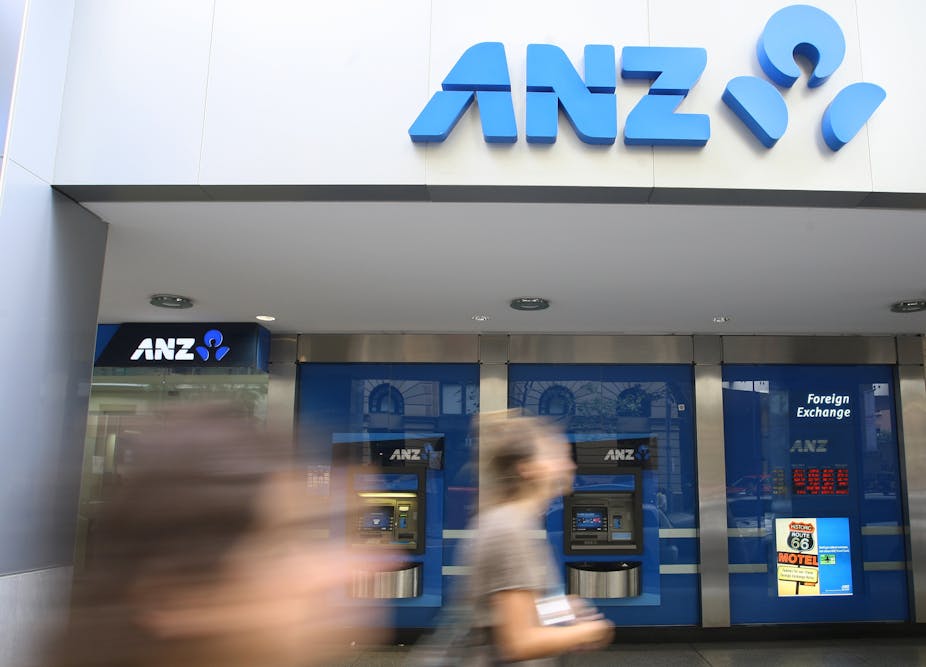ANZ and National Australia Bank have passed on the Reserve Bank of Australia’s 0.25% interest rate cut to mortgage holders, lowering their standard variable rates.
Treasurer Wayne Swan called on the big four major lenders to cut their rates, complaining that the banks couldn’t justify ignoring the RBA’s cut while also delivering record annual profits.
Some smaller banks cut their variable rates after the RBA announcement on Tuesday.
Amid claims that banks are being squeezed by offshore capital markets, Deakin University Senior Lecturer in Finance Dianne Thompson explains the true cost of lending money for mortgages in Australia.
Given the record profits that the banks have reported this year, is there any justification for the large banks not passing on the RBA’s interest-rate cut?
The big four banks profits are now 17% higher than in September in 2010. They are seeing yearly profits of between $4 billion and $6 billion, so you would think that they would be able to cover any increase in funding costs – especially when you consider that the increase in costs stemming from the European crisis hasn’t even come yet.
The major banks have no exposure to Greek banks, and investments in European banks accounts for less than 2% of their assets.
The issue of wholesale funding is often quite opaque, even for people who know the banking system well, so it is easy to see why mortgage holders might not fully understand the message from the banks.
This is about the net-interest margin – the difference between what pay to obtain their fund and what they lend it out for. It has been seen over the past six months that it declined by 10 basis points, it is currently at about 2.4%. Its lowest point was 2.1% in 2008.
The regional banks’ net interest margin is 1.6%, and they have been able to pass on the RBA’s cut. So how can the big banks not justify passing the cut on? Their cost-to-income ratios are among the lowest in the world.
After the beginning of the global financial crisis 2008, the banks made a serious effort to rebuild their domestic deposit base. The means the banks more often finance loans through the use of domestic deposits. In these situations, there is basically not a premium at all.
Domestic deposits have grown annually by 10% from 2009, and now make up about 50% of funding – up from 40% in 2008.
The banks cannot claim that they are paying more for money on international markets while at the same time moving further towards a domestic funding base.
They have done this quite overtly, offering high rates on deposit (or savings) accounts. These will have dropped now following the rate cut, but depositors were seeing up to 5% returns on their deposits.
Some of the smaller lenders passed on the cut almost immediately. How did they manage this if the big banks can’t?
They would have a proportionally greater domestic deposit base than the big four, and they wouldn’t rely as heavily on international funding.
Banks like Bendigo and Adelaide Bank – they rely almost entirely on domestic deposits for their funding.
Their return on equity is generally about half of big banks.
It’s also worth keeping in mind that the big four banks have very high credit ratings. This has a significant impact on what they pay for their funding. Because they have high ratings, their fund-raising costs are quite low because they are seen as not carrying a great amount of risk.
Are banks sufficiently transparent in how they go about raising funds?
No, they’re not transparent at all. It’s hard enough even for an academic researcher to find out what they’re doing, let alone the man in the street.
We don’t know what their margins are like at the moment. Are they still being squeezed? Or have they returned the levels before the GFC?
Their justification for not passing on the series of RBA cuts after the GFC was that they needed to rebuild their margins. They probably have restored those margins, but we don’t know.
These are publicly traded corporations – although the shares are held privately – and they have public-good aspects. In other words, they are involved in the financial system and in the payments system.
The industry gets the benefit from government regulation and the support measures that the government provides to ensure that the system remains viable.
This is why the government says, “even though you are essentially private companies, there are public-good aspects to what you do” – and so the government does things like provide deposit insurance for free, which was in place until very recently. There are social benefits to what banks do – as well as a social cost. So there is a strong argument for more transparency in how they build their books.
A lot of this seems to boil down to getting a good return for shareholders. What is an appropriate return on equity (ROE) for banks?
Something that the public doesn’t understand is that the banks have to offer a high ROE in order to attract shareholders.
If their ROE falls below 14%, then they are below the industry average. Why would investors choose to buy banking shares if they could get a bigger return with another profitable company, such as BHP Billiton?
The ROE for banks is around the pre-crisis average of 15%, which is required to maintain shareholder interest.

